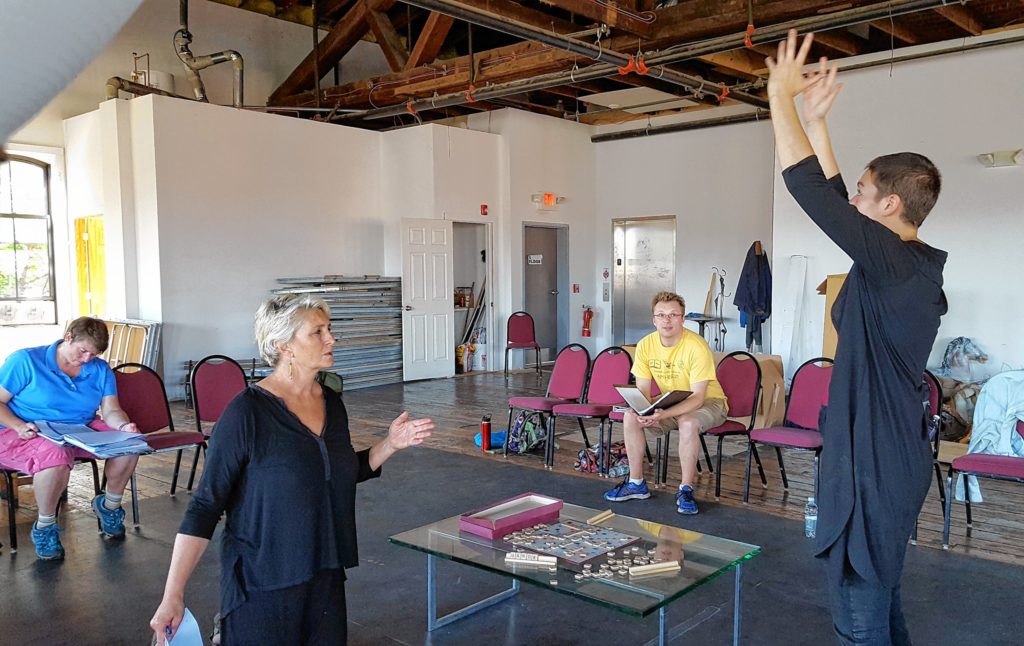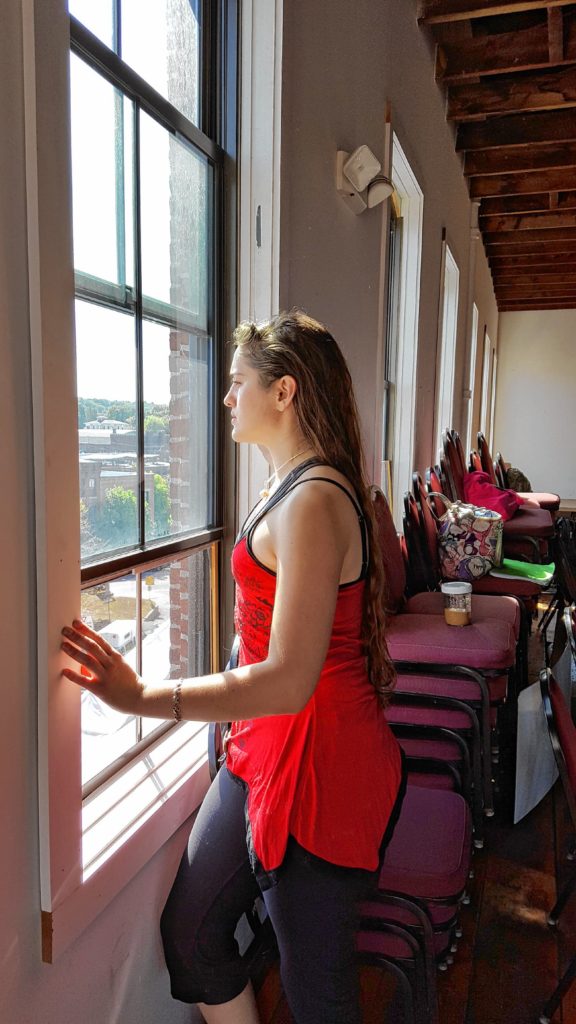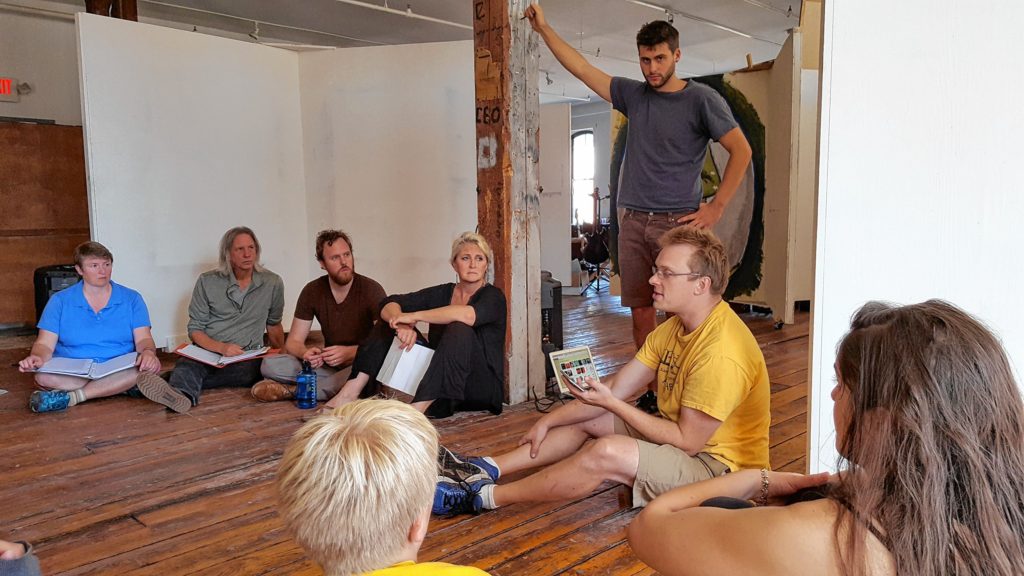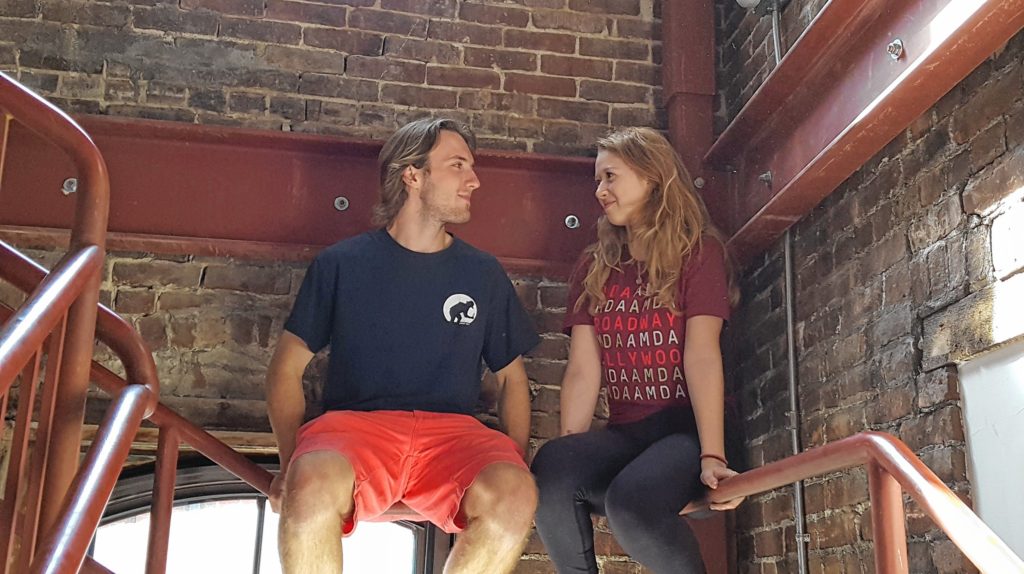Walking Through Time
“In Scene 13, Leontes mourning his wife, things get a little more dialog-y. That needs to be run and worked on today,” says John Bechtold, creator of the immersive production of The Winter’s Tale that performs in downtown Greenfield this weekend.
Leading a rehearsal earlier this month, he’s surrounded by his large cast on an upper floor of The Arts Block, laying out assignments for today’s multitasking rehearsal. “And downstairs, Hermione and Persephone are singing a duet.”
Huh?
In Shakespeare’s play, Hermione is the wife of Leontes, king of Sicilia, who wrongly accuses her of being way too friendly with his best friend, Polixenes, King of Bohemia. Persephone, however, isn’t in that cast; she’s the heroine of the Greek myth in which … wait a minute … an innocent young woman is snatched from the Earth by Hades, lord of the Underworld, where she remains during wintertime but is allowed to return every spring.
Ah, right! In The Winter’s Tale, Hermione appears to die of an outraged and broken heart, but is revived years later in the play’s final scene of forgiveness and redemption. And the passage of those years takes us from a winter of anger and grief to a springtime festival of rebirth.
As the performers disperse to their various duties, Bechtold outlines his entwined concept.
“Shakespeare plays off of a mythic framework that ties very closely to the cycle of the seasons, so we recognized how parallel those worlds and characters are. We’re also spinning off of how the play fractures time and space,” he adds, referring to the play’s two-part structure, with the action separated by a 16-year gap and moving to another country.
“The play lent itself to this format, and this building lent itself to the play.”
Let me explain. Bechtold is the Valley’s genius of immersive theater, that is, shows in which the audience moves among the performers and the performance itself happens in numerous locations simultaneously. The Winter’s Tale, presented by Eggtooth Productions, takes place all over the Arts Block’s four floors, plus the basement — that’s the Underworld, of course, where Hermione duets with Persephone while awaiting her return — and even the stairways linking the floors. There’s also an elevator.
The top floor is Sicilia, where the king, mad with jealousy, condemns his wife and orders the murder of their infant daughter. At the same time, the ground floor is Bohemia, where that princess, Perdita, having been miraculously rescued 16 years earlier, is about to be married to the shepherd-prince Florizel amid rollicking comedy, rock ’n’ roll and a cash bar.
The large room in between the two floors, usually an artist studio and gallery, is “a kind of limbo,” Bechtold explains, “a buffer between the two worlds” that also contains “the inner workings” of Leontes’ guilt and remorse during that long passage of time.
The piece is as much about the audience as the actors,” Bechtold says. “Our goal is to set them up and then turn them loose to explore as they will.”
It’s impossible, by design, to see every piece of the whole show. Instead, “Your choices inform your experience, and that experience will be unique to you alone. You’re walking through time, but you also get to do the dance through the two embedded genres of this play, the comedy downstairs and the darker tragedy upstairs.”
And an intricate dance it is, as the actors have to move through a repeating cycle of scenes and locations in perfect synchrony. Stage manager Deb Banks McIntosh shows me a dense spreadsheet charting each performer’s where and when throughout the play. “I have no idea how I’m going to stage manage all of this,” she admits. “But it’s great fun.”
Bechtold’s immersive concept is inspired by Punchdrunk, the English company behind Sleep No More, a largely silent mashup of Macbeth and Hitchcock’s Rebecca. But in The Winter’s Tale, “the dialogue and the singing are huge forces,” Bechtold says. “One of our goals is to get people very close to the text, physically and intimately.”
The project fields 17 performers, most of them well known to area audiences and some of them embodying the show’s multidisciplinary nature, which includes music, dance and song. Musician John Sheldon plays Autolycus, the rascally trickster of Bohemia. “He is the guy who can get you backstage at a rock concert,” Sheldon says. “But he’s unreliable. He’s a bullshit artist.”
Circus artist Jack Golden is Antigonus, subject of Shakespeare’s most famous stage direction: “Exit, pursued by a bear.” Asked how that chase and its bloody conclusion are going to happen here, he replies, “There are strobe lights, and some things I haven’t seen yet that are going to devour me.”
Chris Rohmann is at StageStruck@crocker.com and valleyadvocate.com/author/chris-rohmann.






